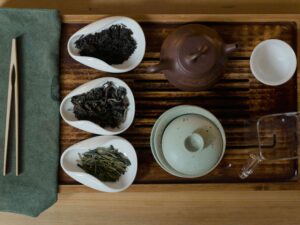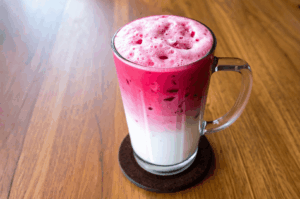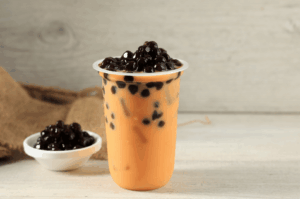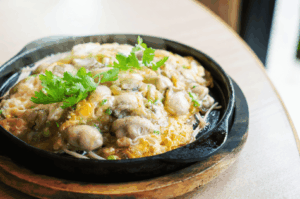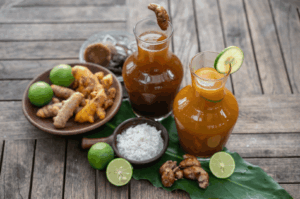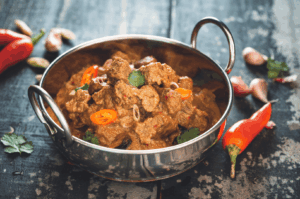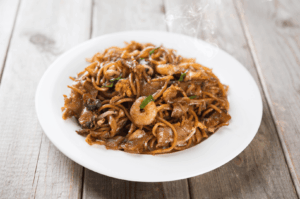
Imagine a large, gleaming steel plate arriving at your table, a vibrant constellation of small bowls each filled with colourful and fragrant preparations. In the centre, fluffy plain rice sits next to a pile of wafer-thin, ghee-brushed Indian bread. This isn’t just an Indian meal; it’s a traditional Gujarati thali, an immersive culinary journey through Western India’s most celebrated vegetarian cuisine. It’s a perfect blend that is entirely its own. Gujarati cuisines are known for their remarkable diversity, with regional specialties and traditional dishes reflecting the rich culinary heritage of Gujarat.
At its heart, this traditional Gujarati meal represents a culture of immense hospitality and a philosophy of balanced, wholesome eating. This Gujarati thali guide will show you how, unlike the fiery curries of Northern India or the robust dishes of other regions, Gujarati food is a delicate dance of sweet, sour, and spicy flavours. From Dhokla to Undhiyu, each popular dish showcases the unique ingredients and techniques that define this celebrated cuisine. Get ready for a celebration of flavours that will leave you both satisfied and inspired.
The Cultural and Religious Heart of Indian Vegetarian Recipes
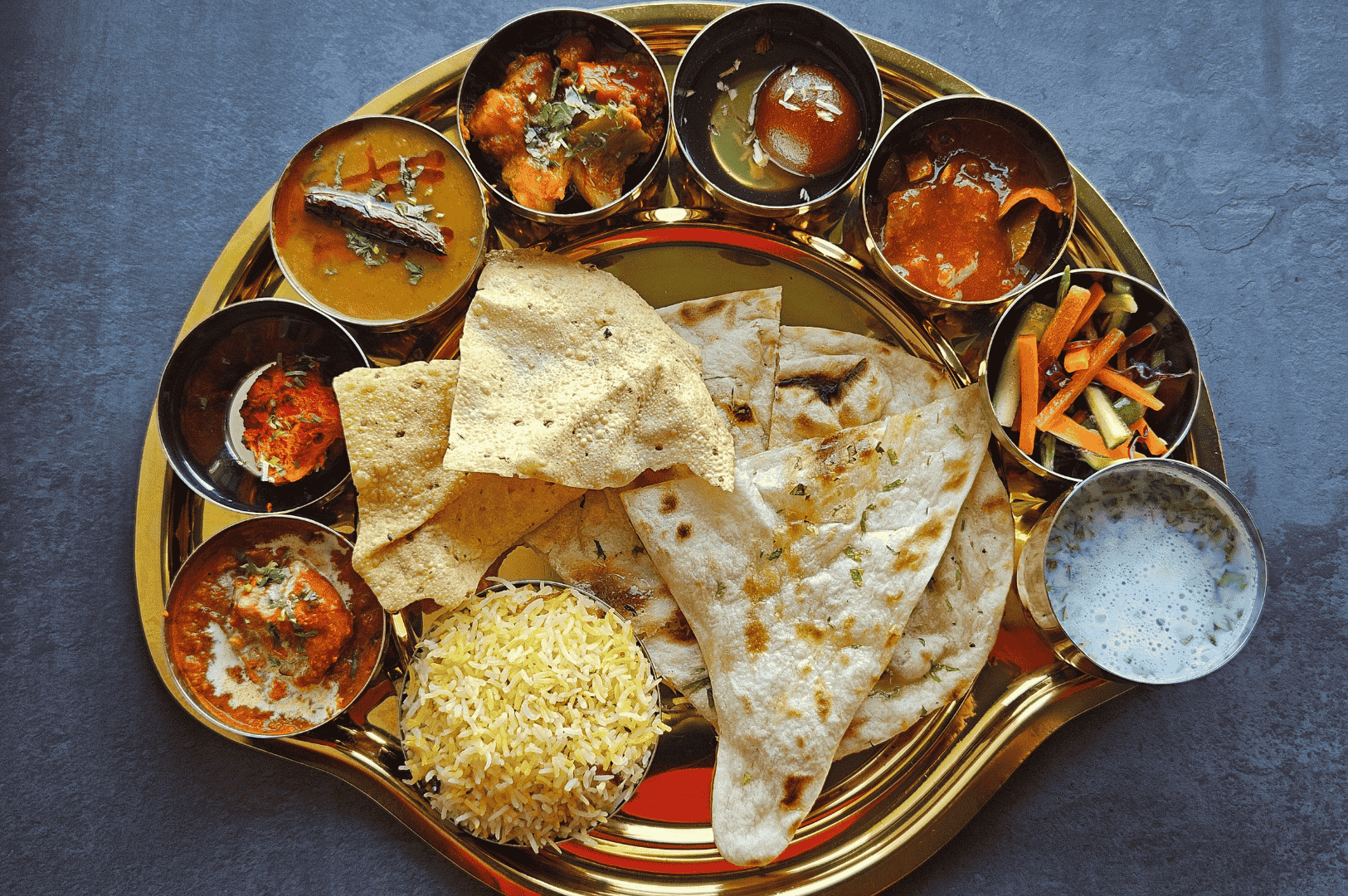
To understand the Gujarati thali, you must first understand the spirit of Gujarat itself. The state has long been a stronghold of religions like Jainism and certain Hindu sects that champion the principle of ahimsa, or non-violence towards all living beings. This deep-rooted belief system is the primary reason why Gujarat has one of the highest proportions of vegetarians in India. This spiritual foundation spurred incredible culinary innovation, as chefs mastered the art of creating and cooking diverse and flavourful vegetarian dishes using only vegetables, lentils, and grains. Over time, both traditional and innovative recipe development flourished, resulting in a rich collection of Gujarati recipes. The thali became the ultimate canvas for this creativity, showcasing many Gujarati dishes that are still beloved today.
Historically, the thali also reflects the agricultural bounty of the region, where seasonal vegetables are treated with respect. It’s a zero-waste marvel; every part of a vegetable is often used, and leftovers are ingeniously repurposed. Today, the thali is a proud symbol of Gujarati identity. It is a communal experience commonly served during special occasions like Gujarati weddings, anchoring families and communities.
Did You Know? The influence of Jainism is so strong that many traditional Gujarati recipes omit not only meat but also root vegetables like onions and garlic, as harvesting them involves uprooting and killing the entire plant.
The Philosophy Behind Thali Dining
A traditional Gujarati thali is a masterclass in balance. It’s not just about piling food on a plate; it’s a carefully orchestrated arrangement designed to delight the senses and nourish the body. The concept is rooted in Ayurveda, the ancient Indian science of life, which advocates for including six essential tastes—sweet, sour, salty, bitter, pungent, and astringent—in a single meal for holistic health. The thali delivers this in one magnificent spread, creating a harmonious interplay of flavours and textures that keeps your palate engaged.
Anatomy of a Traditional Gujarati Cuisine

While the exact components change daily, a classic Gujarati thali features a delightful cast of characters, from mildly spiced vegetable dishes to delicious snacks.
- Farsan (Savoury Snacks): No thali is complete without farsan. These snacks add a wonderful textural contrast. Think of fluffy, steamed dhokla (a savoury cake of fermented rice and chickpea flour) or delicate, tightly rolled khandvi (gram flour and buttermilk sheets). These items are also a popular street food and can be enjoyed anytime as an evening snack. Many farsan are also enjoyed at tea time in Gujarati households, making them a staple for tea breaks.
- Shaak (Vegetable Preparations): A thali will typically feature at least two or three different vegetable dishes. You might find a simple stir-fry alongside a more complex, slow-cooked winter specialty like undhiyu. This one-pot dish is a slow-cooked mix of seasonal produce like purple yam, sweet potato, green beans, and baby potatoes, simmered with fenugreek leaves dumplings (muthiya). Sometimes, chana masala—a flavorful, quick-to-make vegetarian curry highlighting Indian spices—is included in thalis or enjoyed as a side dish.
- Dal (Lentil Soup): The quintessential Gujarati dal, made from pigeon peas (toor dal) or sometimes red lentils, is distinctively sweet, sour, and mildly spiced. It gets its tang from kokum and sweetness from jaggery, with a tempering of mustard seeds, cumin seeds, and curry leaves that gives it a distinct aroma.
- Kadhi: Gujarati Kadhi is a soothing soup made with buttermilk and gram flour. It’s light, tangy, and often has a hint of sweetness, making it a perfect counterbalance to spicier dishes.
- Rotli (Breads): You’ll always find a selection of flatbreads made from whole wheat flour or pearl millet flour. The most common is the rotli or phulka, a soft, paper-thin bread puffed up on an open flame.
- Rice: Simple steamed rice (bhaat) or fragrant jeera rice serves as the perfect neutral base for the flavourful dal and kadhi. Sometimes, you might find khichdi (a comforting mix of rice and lentils) instead.
- Chutneys and Pickles: These are the flavour boosters. You’ll always find a spicy green chutney made with coriander and green chillies, alongside a sweet mango pickle (chunda).
- Sweets (Mithai): Gujaratis have a famous sweet tooth. The thali always includes a dessert, which could be shrikhand (creamy strained yoghurt) or basundi (rich, reduced milk with nuts). Basundi or shrikhand are similar to desserts from North India, such as rabdi, but have their own unique Gujarati twist.
A final touch is a glass of chaas (spiced buttermilk), a cooling digestive that tastes great with the meal.
Ingredients and Cooking Techniques: The Building Blocks of Gujarati Thali
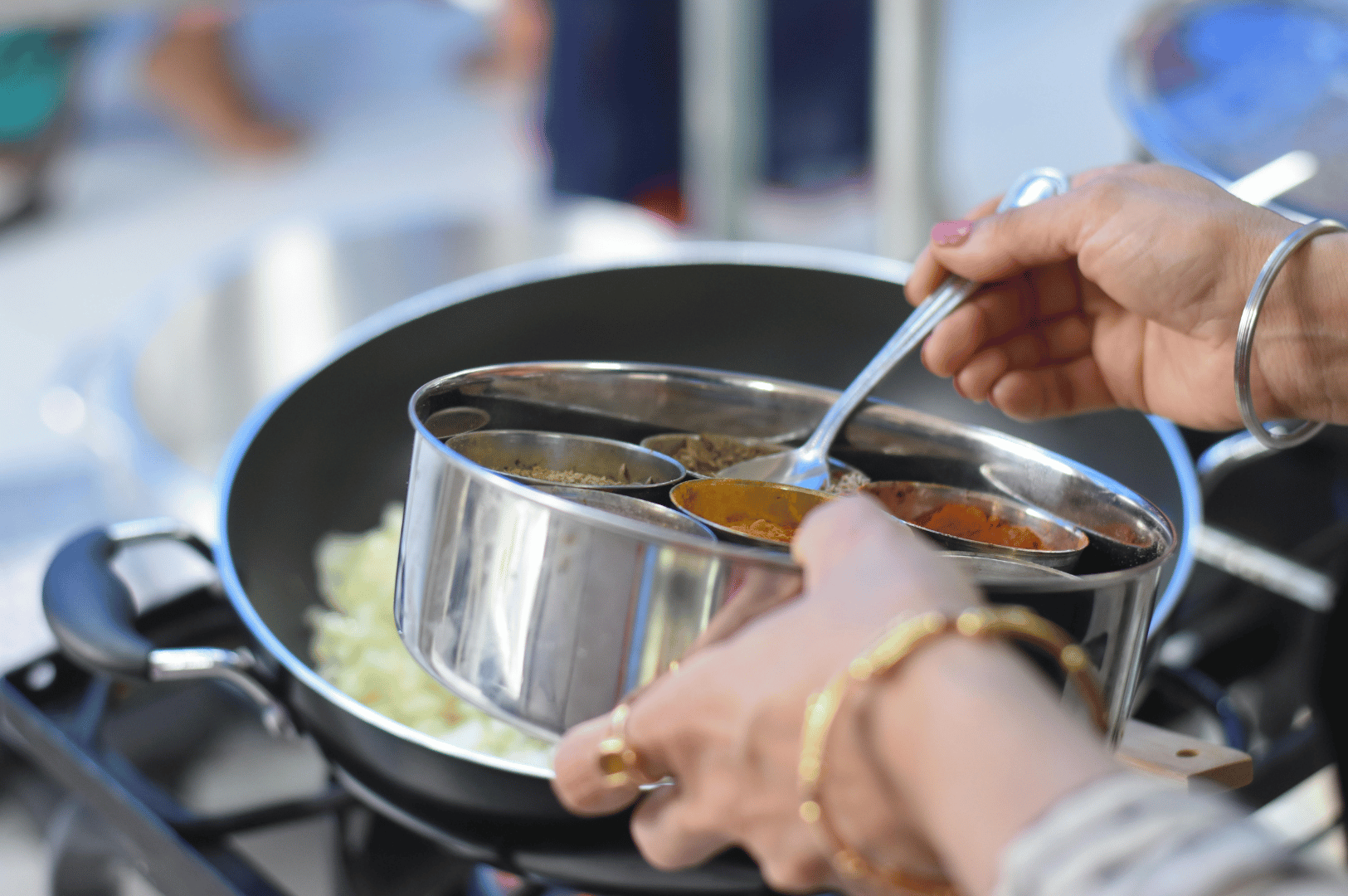
At the heart of Gujarati cuisine are grains and flours—wheat flour, gram flour, and rice flour—each lending its own character to a variety of dishes. Soft rotlis and thepla are rolled from whole wheat flour, while gram flour forms the base for beloved snacks like dhokla and khandvi, their light texture achieved through the fermentation of rice and lentils. This process not only imparts a distinct aroma but also makes these dishes easy to digest and full of flavor.
Vegetables are celebrated in every Gujarati meal, with seasonal produce like green peas and green beans starring in many recipes. The use of fresh, local vegetables ensures that each dish is both nutritious and bursting with taste. Pigeon peas, especially in the form of toor dal, are a staple in Gujarati dal—a comforting, mildly spiced lentil soup that’s a cornerstone of the thali. Fenugreek leaves, with their unique bitterness, add depth to dishes like methi thepla, while green chilies bring a gentle heat that enlivens the palate.
Spices are the soul of Gujarati food, and their careful blending is what sets this cuisine apart. Garam masala, cumin seeds, mustard seeds, and curry leaves are used in various combinations to create a perfect blend of flavors. The tempering of spices—sizzling them in hot oil before adding to a dish—releases their essential oils, infusing the food with a savory, aromatic quality that’s instantly recognizable. Green chutney, made with fresh cilantro and green chilies, adds a tangy, refreshing note to snacks and main courses alike.
Traditional cooking techniques like steaming and stir-frying are favored for their ability to preserve the natural flavors and nutrition of ingredients. Steamed dhokla, fluffy and light, is a popular evening snack, while stir-fried shaak showcases the versatility of seasonal vegetables. Jeera rice, fragrant with cumin seeds, and basmati rice provide the perfect canvas for soaking up the flavors of curries and dals.
Regional Variations and Modern Interpretations of Gujarati Food
The Gujarati thali adapts as you travel across the state, with various spices creating unique flavour profiles. The Kathiyawadi thali, from the Kathiawar peninsula, is bold and spicy. In contrast, the Surti thali, from the city of Surat, is known for its culinary refinement and elaborate farsan.
While tradition is revered, the Gujarati thali is not stuck in the past. Today, chefs in Indian restaurants and around the world are reimagining this classic meal. You might find a deconstructed thali, where each element is presented as a separate course. Some restaurants are creating "thali bowls," a convenient, single-bowl version perfect for a quick urban lunch. These innovative interpretations are introducing the balanced philosophy of the thali to new audiences.
The Surprising Health Benefits and How to Experience It
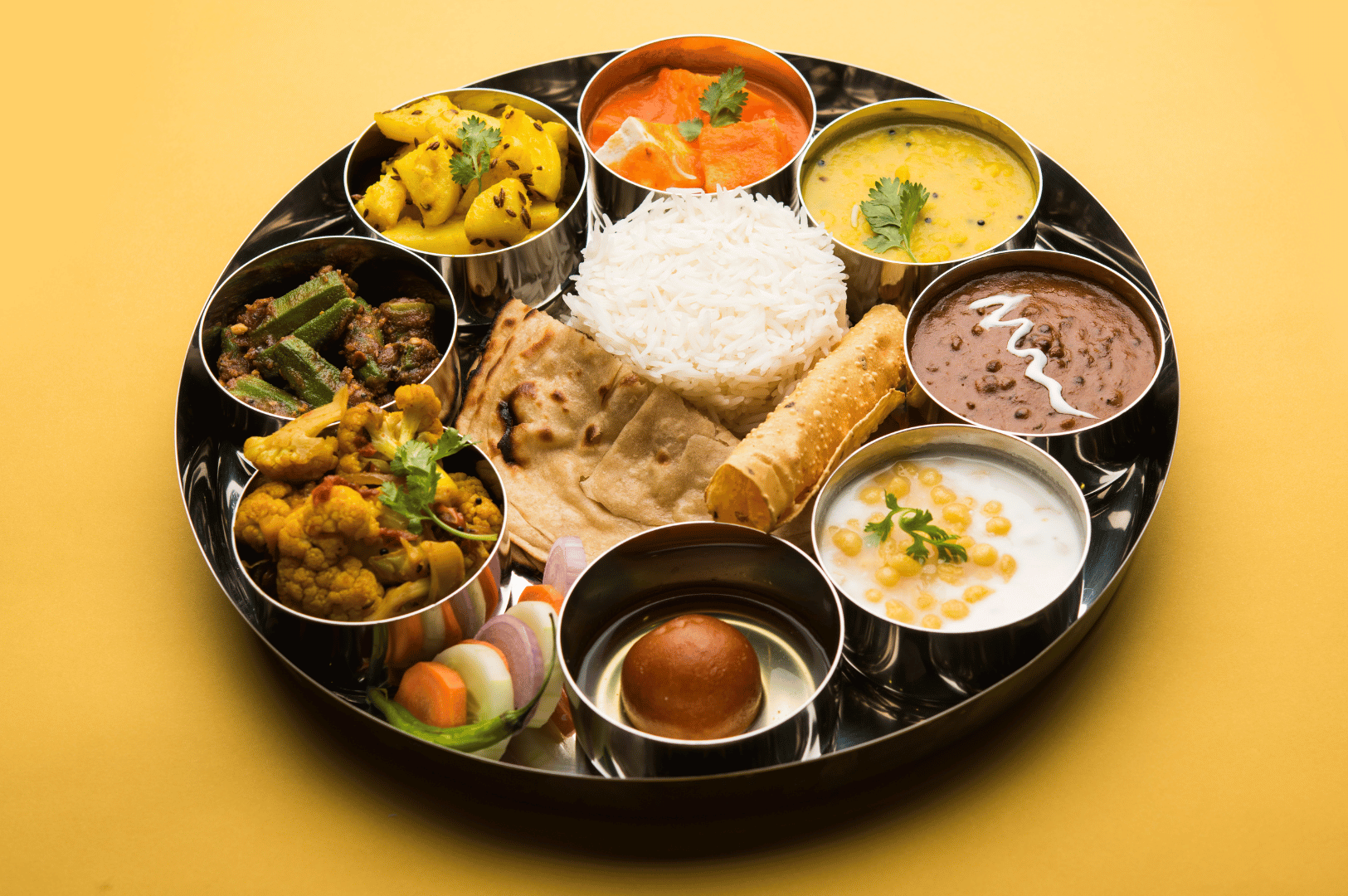
At first glance, a thali might seem like an indulgence, but it’s a surprisingly nutritious dish. This plant-based dining tradition is packed with benefits. The combination of lentils and grains creates a complete protein profile. The variety of vegetables provides a wide spectrum of vitamins, minerals, and fibre. For those tracking nutrition calories, modern restaurants offer healthier adaptations like baked farsan.
Ready to dive in? Finding an authentic Gujarati restaurant is a rewarding experience. In cities like Ahmedabad, Vadodara, and Rajkot, you’ll find legendary establishments packed with families enjoying this traditional meal.
Eating Etiquette Tip: Traditionally, a thali is eaten with the right hand. Tear a piece of rotli, create a small scoop, and use it to pick up the shaak and other dry items. Rice is typically mixed with dal or kadhi and eaten with the fingers or a spoon.
A Feast for the Senses and the Soul
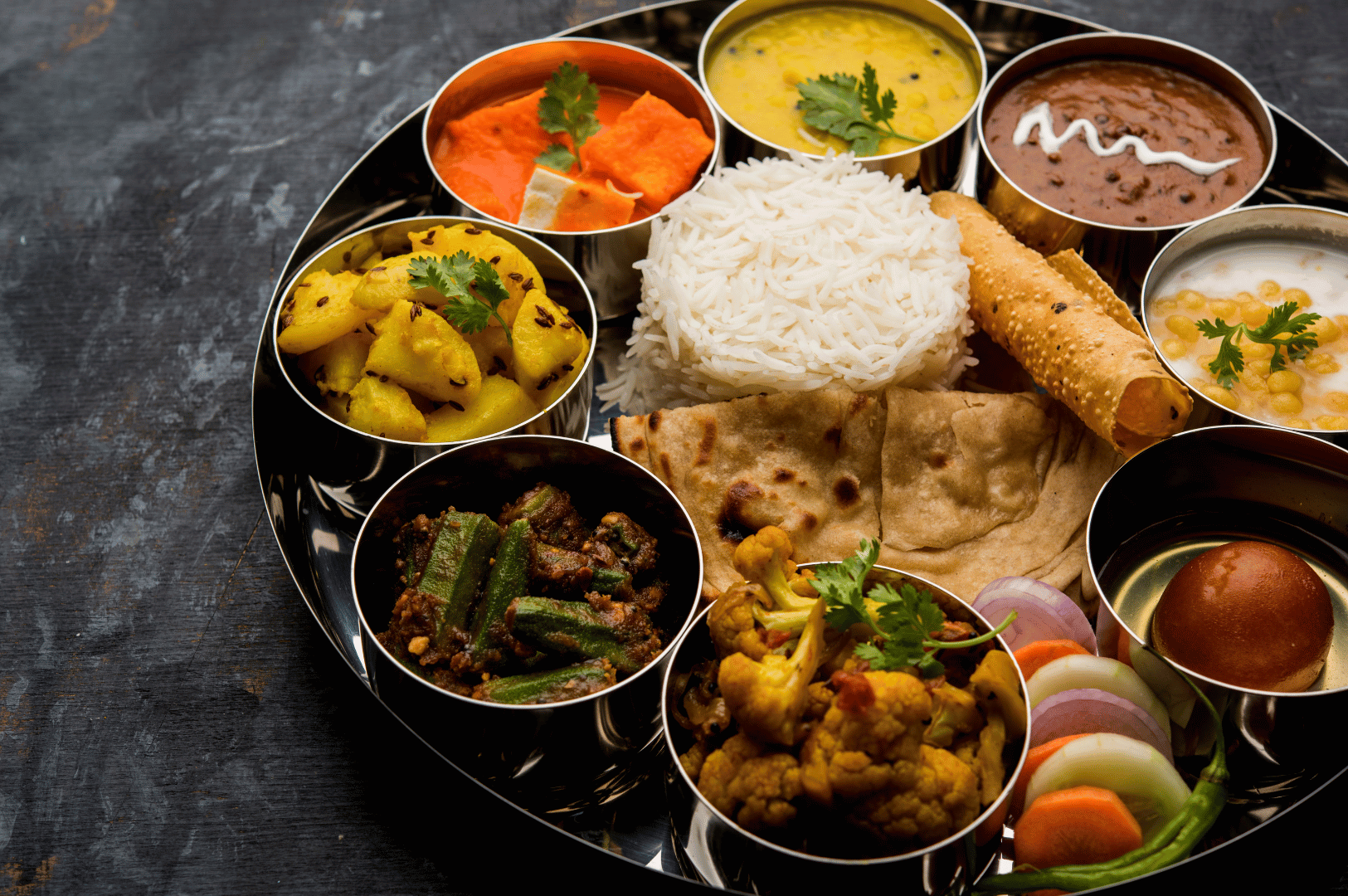
The Gujarati thali is far more than just one of the many Indian dishes; it’s a cultural phenomenon that represents the best of Indian cuisine. It is a shared experience that embodies hospitality, balance, and the incredible diversity of plant-based culinary traditions in India. Each of the various dishes cooked tells a story of season, region, and centuries of culinary wisdom.
So, the next time you're seeking a true culinary journey, look for a Gujarati thali. It’s a feast that promises to engage all your senses and leave you with a lasting appreciation for this wonderful corner of the food world.
For more regional flavors, explore Thailand’s magical butterfly tea or discover the comforting richness of khao soi, northern Thailand’s iconic curry noodle soup.
The Art of Asian Tea Ceremony Traditions: Ancient Rituals and Cultural Values Across Asia
Dio Asahi | November 15, 2025
A cup of tea, in many parts of Asia, represents far more than a beverage-it is a conduit to ancestral tradition, intellectual pursuit, and the cultivation of mindfulness. Asian tea ceremony traditions turn the act of drinking tea into a sophisticated art form, layered with symbolism, philosophy, and socio-cultural values. Each gesture, from scooping powdered…
The Art of Slow-Cooked Curry Recipes: Time’s Magic in South Asian Cuisine
Eda Wong | November 13, 2025
Step into a South Asian kitchen, and the senses are instantly enveloped by the inviting aroma of food slowly simmering in a sturdy clay pot or heavy vessel. The allure is undeniable: in this space, slow-cooked curry recipes are a celebration of patient tradition, spices, and the richness of South Asian cuisine. Here, time and…
Bandung Drink Recipe: A Singaporean Rose Syrup Drink Tradition
Eat Drink Asia Team | November 11, 2025
Step into any night market or hawker centre in Singapore, and you’ll spot a vibrant, glowing glass filled with a cold, beautiful drink-Bandung. Known for its iconic blush-pink hue and refreshing taste, this rose syrup drink is an integral part of Singapore’s beverages scene and a cherished tradition in Southeast Asian gatherings. More than just…
The Ultimate Hainanese Chicken Rice Recipe: A Deep Dive
Eda Wong | November 8, 2025
To wander through Singapore’s bustling hawker centres on a humid evening is to experience a symphony of sights, sounds, and smells. Among the many other dishes sizzling away, one plate stands out for its elegant simplicity: Hainanese Chicken Rice. It arrives without fanfare-gleaming slices of poached chicken over fragrant rice, flanked by a trio of…
Bubble Tea Origins: How Taiwan Created a Global Beverage Phenomenon
Dio Asahi | November 6, 2025
From Taipei to New York, a single drink has captured the world’s taste buds: bubble tea. This beverage, known as pearl milk tea or boba tea, and also known as boba in many regions, is celebrated for its delightful combination of sweet, creamy tea and signature chewy tapioca pearls. What began as a novel creation…
A Food Lover’s Guide to the Taiwanese Oyster Omelet
Eat Drink Asia Team | November 4, 2025
As twilight descends upon Taipei City, a vibrant energy pulses through its streets. This is the hour of the night markets, bustling hubs of community, commerce, and some of the world’s most incredible street food. Amidst the steam from soup dumplings and the sizzle of Taiwanese fried chicken, one iconic dish reigns supreme: the Taiwanese…
Jamu: Indonesian Herbal Medicine for Modern Well-Being
Dio Asahi | November 1, 2025
Across the Indonesian archipelago, a vibrant tradition of herbal healing has flourished for centuries. This is jamu, a cornerstone of Indonesian cultural heritage and a sophisticated system of traditional herbal medicine. Far more than just a refreshing drink, jamu represents a philosophy of balance, a deep connection to nature, and a form of indigenous medicine…
Padang Beef Rendang: The Complex Process Behind Indonesia’s Most Famous Dish
Eda Wong | October 30, 2025
This post may contain affiliate links. For full transparency, this article may contain affiliate links. To call Padang beef rendang simply a dish is to miss the soul of Indonesian cuisine. This legendary slow-cooked dry curry, a centerpiece of both festive tables and humble meals, has earned its fame as one of the world’s most…
Teh Tarik Malaysia: The Art and Science Behind Iconic Pulled Tea
Eat Drink Asia Team | October 28, 2025
In Malaysia, ordering a cup of teh tarik is about so much more than just enjoying a hot drink. Teh tarik, literally translated as “pulled tea,” is Malaysia’s national beverage, famous for its sweet, creamy taste, frothy top, and the spectacular pulling technique seen in bustling mamak stalls and coffee shops across the country. A…
The Legendary Penang Char Kway Teow: A Culinary Journey
Dio Asahi | October 25, 2025
The air in Penang is thick with anticipation, carrying the sounds and smells of Malaysian street food being crafted with expert care. Your attention is captured by one of the many street vendors, a master standing before a seasoned wok glowing over an intense fire. The rhythmic clanging of metal on metal is the soundtrack…

